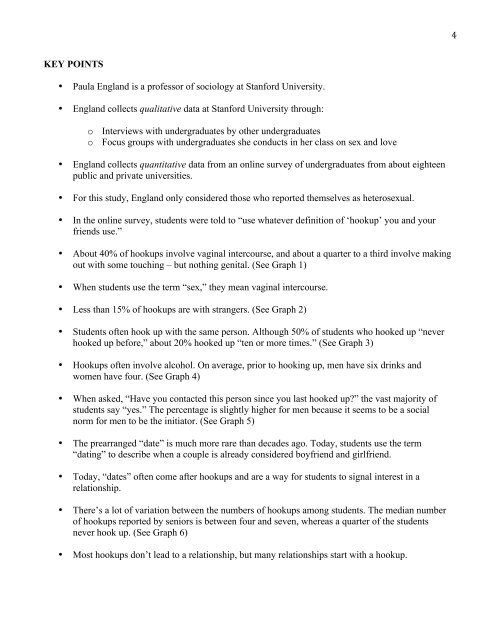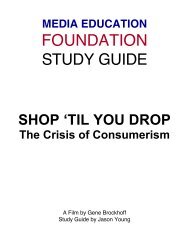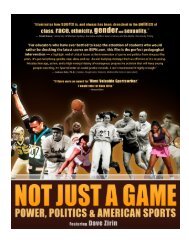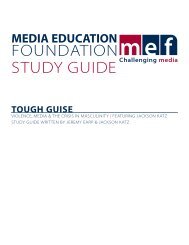Understanding Hookup Culture - Study Guide - Media Education ...
Understanding Hookup Culture - Study Guide - Media Education ...
Understanding Hookup Culture - Study Guide - Media Education ...
You also want an ePaper? Increase the reach of your titles
YUMPU automatically turns print PDFs into web optimized ePapers that Google loves.
KEY POINTS<br />
• Paula England is a professor of sociology at Stanford University.<br />
• England collects qualitative data at Stanford University through:<br />
o Interviews with undergraduates by other undergraduates<br />
o Focus groups with undergraduates she conducts in her class on sex and love<br />
• England collects quantitative data from an online survey of undergraduates from about eighteen<br />
public and private universities.<br />
• For this study, England only considered those who reported themselves as heterosexual.<br />
• In the online survey, students were told to “use whatever definition of ‘hookup’ you and your<br />
friends use.”<br />
• About 40% of hookups involve vaginal intercourse, and about a quarter to a third involve making<br />
out with some touching – but nothing genital. (See Graph 1)<br />
• When students use the term “sex,” they mean vaginal intercourse.<br />
• Less than 15% of hookups are with strangers. (See Graph 2)<br />
• Students often hook up with the same person. Although 50% of students who hooked up “never<br />
hooked up before,” about 20% hooked up “ten or more times.” (See Graph 3)<br />
• <strong>Hookup</strong>s often involve alcohol. On average, prior to hooking up, men have six drinks and<br />
women have four. (See Graph 4)<br />
• When asked, “Have you contacted this person since you last hooked up?” the vast majority of<br />
students say “yes.” The percentage is slightly higher for men because it seems to be a social<br />
norm for men to be the initiator. (See Graph 5)<br />
• The prearranged “date” is much more rare than decades ago. Today, students use the term<br />
“dating” to describe when a couple is already considered boyfriend and girlfriend.<br />
• Today, “dates” often come after hookups and are a way for students to signal interest in a<br />
relationship.<br />
• There’s a lot of variation between the numbers of hookups among students. The median number<br />
of hookups reported by seniors is between four and seven, whereas a quarter of the students<br />
never hook up. (See Graph 6)<br />
• Most hookups don’t lead to a relationship, but many relationships start with a hookup.<br />
4














![Sext Up Kids [Transcript] - Media Education Foundation](https://img.yumpu.com/3099056/1/190x245/sext-up-kids-transcript-media-education-foundation.jpg?quality=85)